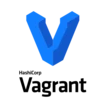Introduction
Modern software development demands flexibility, consistency, and efficiency in managing diverse development environments. Vagrant emerges as an indispensable tool for Mac developers seeking to streamline virtual machine creation and management without the complexity traditionally associated with virtualization platforms. Developed by HashiCorp, Vagrant provides a unified command-line interface that abstracts away the complexities of different virtualization providers, enabling developers to focus on building applications rather than wrestling with infrastructure configuration.
The challenge of maintaining consistent development environments across teams and projects has plagued software developers for decades. Vagrant addresses this fundamental problem by introducing a declarative configuration approach that ensures every team member works within identical environments. This consistency eliminates the notorious "works on my machine" syndrome that wastes countless development hours. For Mac users specifically, Vagrant integrates seamlessly with macOS workflows while supporting multiple virtualization backends including Parallels, VMware Fusion, and VirtualBox.
Understanding Vagrant's Core Value Proposition
Vagrant fundamentally transforms how developers interact with virtual machines by introducing automation and standardization to previously manual processes. Rather than clicking through graphical interfaces to configure virtual machines, Vagrant enables developers to define infrastructure as code through simple configuration files. This infrastructure-as-code approach brings version control, reproducibility, and collaboration to development environment management.
The traditional virtualization workflow requires developers to manually configure operating systems, install dependencies, set up networking, and configure shared folders through cumbersome graphical interfaces. Vagrant eliminates this tedium by codifying these configurations in Vagrantfiles that can be shared, versioned, and executed consistently across different machines and team members. This automation dramatically reduces environment setup time from hours to mere seconds.
Version conflict management represents another critical capability that Vagrant delivers effortlessly. Development teams often require different versions of programming languages, databases, or system libraries for various projects. Installing these conflicting dependencies directly on development machines creates chaos and instability. Vagrant solves this by isolating each project within dedicated virtual machines, preventing version conflicts while maintaining clean host systems.
Rapid Virtual Machine Provisioning
The speed at which Vagrant creates fully functional development environments distinguishes it from traditional virtualization approaches. The workflow begins with creating a Vagrantfile in the project's root directory. This configuration file, written in Ruby syntax, defines every aspect of the virtual environment including base operating system, resource allocation, network configuration, and provisioning scripts.
A minimal Vagrant configuration might specify config.vm.box = "almalinux/8" to define the base operating system image, followed by provider-specific settings for Parallels, VMware Fusion, or VirtualBox. Once configured, executing the vagrant up command initiates automated environment creation. Vagrant downloads the specified box image if not already cached, creates the virtual machine according to configuration parameters, and provisions the environment with any defined scripts or automation tools.
Remarkably, Vagrant completes this entire process in approximately 90 seconds, delivering a fully operational server environment identical to production systems. This rapid provisioning capability enables developers to experiment freely, knowing they can destroy and recreate environments instantly without manual reconfiguration. The reproducibility ensures that development, staging, and production environments maintain perfect parity, reducing deployment surprises.
The automatic folder synchronization feature within Vagrant enables seamless code editing on the host machine while executing code within virtual environments. This synchronization eliminates the need to manually transfer files or work exclusively within virtual machine interfaces. Developers enjoy the comfort of their preferred editors and tools while benefiting from isolated execution environments.
Multi-Provider Virtualization Integration
One of Vagrant's most powerful capabilities is its provider-agnostic architecture that supports multiple virtualization platforms through a unified interface. Whether using Parallels Desktop for its exceptional performance on Apple Silicon, VMware Fusion for enterprise compatibility, or VirtualBox for its open-source accessibility, Vagrant abstracts provider-specific differences behind consistent commands and workflows.
This multi-provider support within Vagrant proves invaluable in heterogeneous team environments where different developers use different virtualization platforms based on licensing, performance requirements, or personal preferences. A single Vagrantfile can specify configurations for multiple providers, automatically adapting to whichever platform each developer employs. This flexibility prevents vendor lock-in while maintaining environment consistency.
Vagrant communicates with virtualization providers through plugin architecture that extends functionality beyond core features. The plugin ecosystem enables integration with cloud platforms, configuration management tools, and specialized provisioning systems. This extensibility ensures Vagrant adapts to evolving development workflows and emerging technologies.
Optimized Performance on Apple Silicon
Mac users with Apple Silicon processors experience exceptional performance when using Vagrant in combination with Parallels Desktop. The ARM-native architecture of M1, M2, and M3 processors delivers unprecedented virtualization efficiency when running ARM-based operating systems. Vagrant leverages these performance advantages while maintaining the same simple workflows regardless of underlying hardware architecture.
The energy efficiency of Vagrant on Apple Silicon significantly extends battery life during mobile development sessions. Traditional x86 virtualization on ARM processors requires resource-intensive emulation that drains batteries rapidly. By utilizing native ARM virtual machines through Vagrant and Parallels, developers maintain high performance while minimizing power consumption.
Snapshot management represents another area where Vagrant excels when paired with capable providers like Parallels. Developers can capture environment states at any point, experiment freely with changes, and instantly revert to known-good configurations if problems arise. This safety net encourages experimentation and reduces fear of breaking development environments through exploratory changes.
Infrastructure as Code Philosophy
Vagrant embodies infrastructure-as-code principles that have revolutionized modern operations and development practices. By defining environments through version-controllable text files, Vagrant enables teams to track infrastructure changes alongside application code. This unified versioning ensures perfect correlation between application versions and their required execution environments.
The declarative configuration approach employed by Vagrant specifies desired end states rather than step-by-step procedures. This abstraction allows Vagrant to determine optimal provisioning sequences while shielding developers from platform-specific implementation details. The resulting configurations remain readable and maintainable even as projects grow in complexity.
Sharing Vagrant configurations through version control systems enables new team members to become productive immediately. Rather than following lengthy setup documentation that quickly becomes outdated, newcomers simply clone repositories and execute vagrant up to obtain identical environments used by the entire team. This onboarding acceleration represents substantial cost savings for organizations.
Advanced Configuration Capabilities
Beyond basic virtual machine creation, Vagrant supports sophisticated configurations that mirror complex production architectures. Multi-machine Vagrantfiles define entire clusters of interconnected virtual machines, enabling developers to test distributed systems locally. Network configurations within Vagrant establish communication paths between machines, simulating production network topologies.
Provisioning integration within Vagrant connects to popular automation tools including Ansible, Chef, Puppet, and Salt. These integrations enable sophisticated environment customization during initial creation or subsequent updates. Vagrant can execute shell scripts, apply configuration management code, or trigger containerization platforms to prepare environments precisely as needed.
Resource allocation controls in Vagrant allow developers to specify CPU cores, memory allocation, and disk space for virtual machines. These parameters can be tuned based on project requirements, ensuring adequate resources for demanding applications while preventing excessive consumption on shared development machines.
Practical Workflow Integration
Vagrant integrates smoothly into daily development workflows through intuitive command-line interfaces. The vagrant ssh command provides instant access to virtual machine consoles, enabling traditional server administration and debugging. The vagrant halt and vagrant destroy commands manage machine lifecycle, cleanly shutting down or completely removing environments when no longer needed.
Status checking through vagrant status provides quick insights into environment states without launching graphical management interfaces. This command-line efficiency aligns with developer preferences for keyboard-driven workflows and scriptable automation. Vagrant becomes invisible infrastructure that supports development without demanding constant attention.
The plugin ecosystem surrounding Vagrant extends functionality through community contributions. Plugins add support for additional providers, introduce new provisioning methods, enhance networking capabilities, and integrate with cloud platforms. This extensibility ensures Vagrant evolves with changing development practices and emerging technologies.
Open-Source Foundation and Community
As open-source software, Vagrant benefits from transparency, community contributions, and freedom from vendor lock-in. The public source code enables security auditing, custom modifications, and deep understanding of tool behavior. This openness builds trust while enabling organizations to adapt Vagrant to unique requirements when necessary.
HashiCorp's stewardship of Vagrant provides professional development, regular updates, and long-term maintenance commitments. Version 2.4.9 represents ongoing refinement incorporating bug fixes, performance improvements, and feature enhancements. The combination of open-source accessibility and commercial backing creates a sustainable development model.
The Vagrant community contributes extensive documentation, tutorials, and pre-built box images through public repositories. This shared knowledge accelerates adoption while providing solutions to common challenges. Community-maintained boxes for popular operating systems and configurations eliminate the need to build base images from scratch.
Cost Considerations and Provider Dependencies
While Vagrant itself is free and open-source, practical usage often requires commercial virtualization providers for optimal performance and compatibility. Parallels Desktop and VMware Fusion are paid products that deliver superior performance on macOS compared to free alternatives. This creates a nuanced cost structure where Vagrant provides free orchestration but may incur provider licensing costs.
VirtualBox offers a free alternative for budget-conscious developers, though with performance limitations compared to commercial providers, particularly on Apple Silicon hardware. Vagrant supports VirtualBox fully, enabling zero-cost development environments for individuals or organizations with budget constraints.
The value proposition of Vagrant often justifies provider costs through productivity improvements and consistency benefits. The time savings from rapid environment provisioning, the risk reduction from environment parity, and the collaboration improvements from shared configurations typically outweigh licensing expenses.
Installation and Setup Process
Installing Vagrant on macOS follows straightforward procedures through Homebrew package management or direct downloads. The Homebrew installation method, preferred by many Mac developers, executes with a simple brew install vagrant command that handles dependency resolution and PATH configuration automatically.
The clean installation process for Vagrant avoids system pollution, maintaining macOS cleanliness while providing powerful functionality. Configuration remains contained within project directories and a minimal home directory structure, simplifying future removal if necessary.
Initial Vagrant usage involves selecting appropriate base boxes from public repositories or building custom images. HashiCorp maintains Vagrant Cloud, a public registry of base boxes covering popular operating systems and configurations. These pre-built images accelerate initial setup while providing starting points for customization.
Use Cases and Application Scenarios
Web developers leverage Vagrant to maintain consistent LAMP, LEMP, or other web stack configurations across development teams. The ability to mirror production environments locally enables confident deployment and reduces staging-to-production discrepancies.
DevOps engineers use Vagrant for testing infrastructure automation code in safe, isolated environments. Configuration management scripts can be developed and validated locally before applying to production systems, reducing risk and accelerating iteration.
Educators employ Vagrant to provide students with standardized computing environments for coursework. Rather than struggling with diverse student hardware and operating systems, instructors distribute Vagrantfiles that create identical environments regardless of host platform.
Conclusion
Vagrant establishes itself as an essential tool for Mac developers seeking efficient, consistent development environment management. Through its unified interface supporting multiple virtualization providers, rapid provisioning capabilities, and infrastructure-as-code approach, Vagrant addresses fundamental challenges in modern software development. The optimized performance on Apple Silicon through Parallels integration delivers exceptional efficiency for Mac users with modern hardware.
The open-source foundation of Vagrant combined with HashiCorp's professional stewardship creates a sustainable, trustworthy platform for critical development workflows. While optimal usage may require investment in commercial virtualization providers, the productivity improvements and consistency benefits typically justify these costs. For development teams prioritizing reproducibility, collaboration, and efficiency, Vagrant represents an indispensable addition to the development toolkit. Version 2.4.9 from HashiCorp continues this tradition of excellence, delivering refined functionality that simplifies the complex task of development environment management. Whether working individually or as part of large distributed teams, Vagrant transforms virtual machine management from tedious manual processes into automated, reproducible infrastructure that empowers developers to focus on creating exceptional software.








